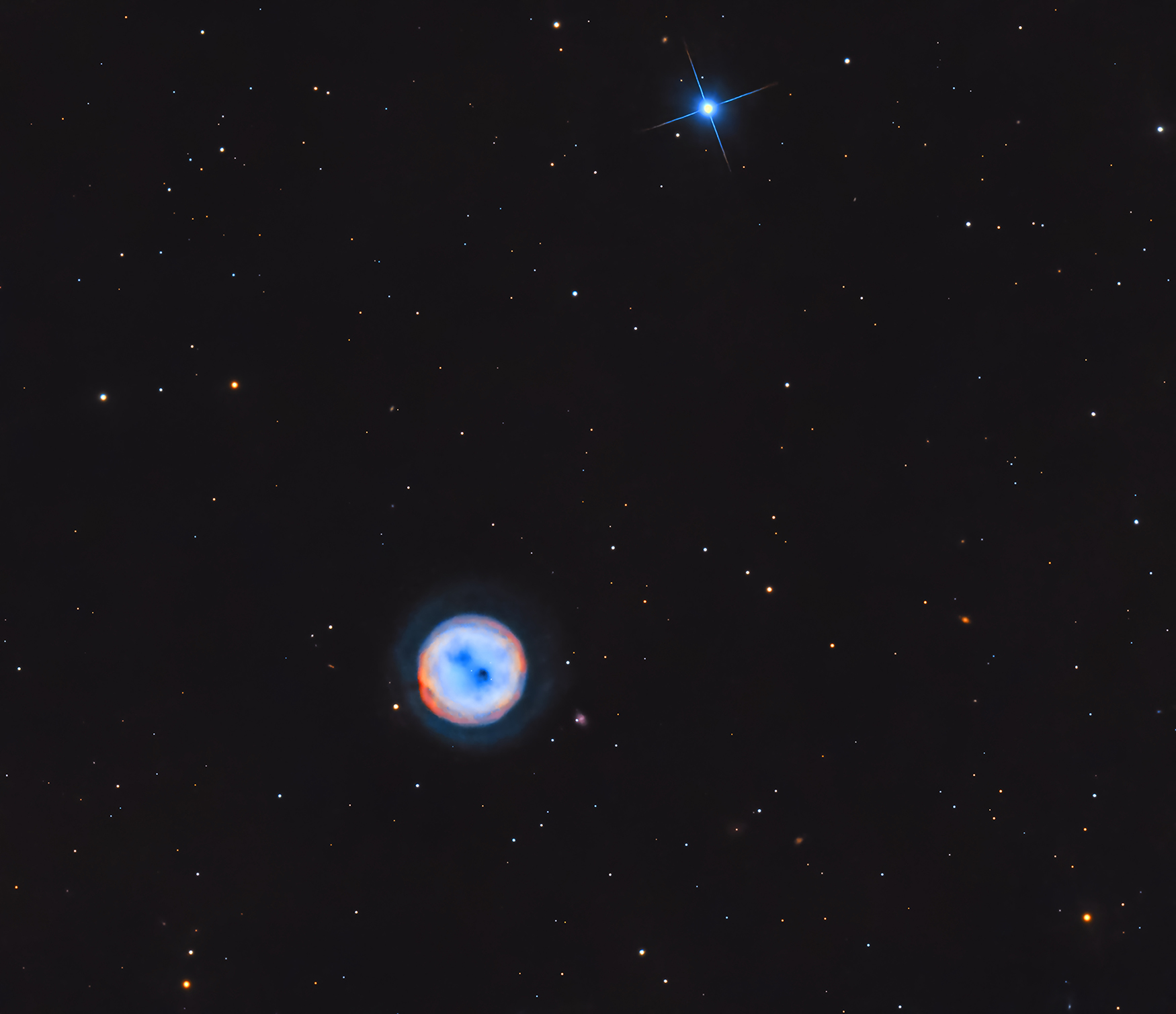
Photographer:
massimo.difusco
Location of Photo:
Ferrara (Italy)
Date/Time of photo:
25/12/2023 00:00
Equipment:
Konus 200/1000 @950mm (f/4.8), Player One Poseidon-C @-5 °C camera, Sky-Watcher Eq6r Pro mount, SvBony CLS filter, Optolong L_Ultimate filter
Description:
M97 is one of the most photographed planetary nebulae due to its great brightness and, consequently, the resulting simplicity in photographing it. Not everyone knows, however, that the Owl Nebula has a component of ionized Oxygen which forms a sort of blue halo all around the "sphere" that we are used to seeing (a feature discovered only in 1991 by Karen B. Kwitter). In this picture, I really wanted to highlight this little-known feature of the M97, focusing heavily on narrowband acquisition with the L_Ultimate filter. Messier 97 (M97), also known as the Owl Nebula or NGC 3587, is a famous planetary nebula located in the constellation Ursa Major at a distance of approximately 2030 light-years from Earth. It is estimated to be about 8000 years old and was formed by the outflow of material from the stellar wind of the central star which went from being a giant star to a 14th magnitude white dwarf (visible in my photo). The nebula is arranged in three concentric shells, of which the outermost shell (the OIII halo) is about 20–30% larger than the inner shell. It was called the Owl Nebula because of its appearance when viewed telescopically, which reveals two dark spots that look like the eyes of an owl. M97 was discovered by the French astronomer Pierre Méchain on February 16, 1781. Méchain reported the discovery to his friend and colleague Charles Messier, who added the nebula to his catalog.
 0
0